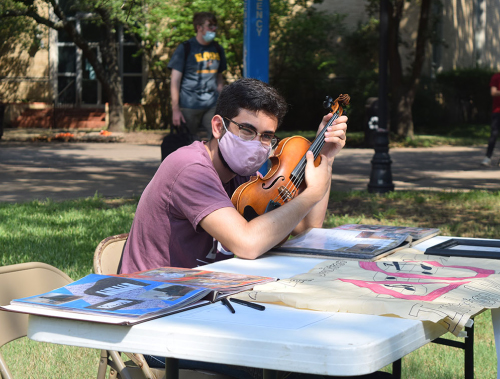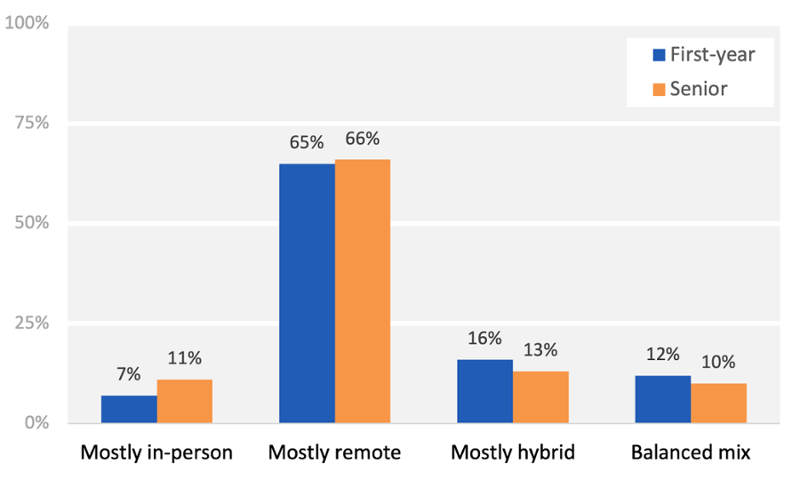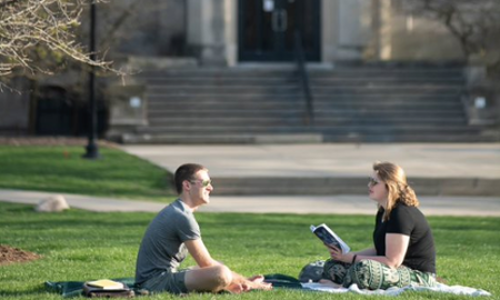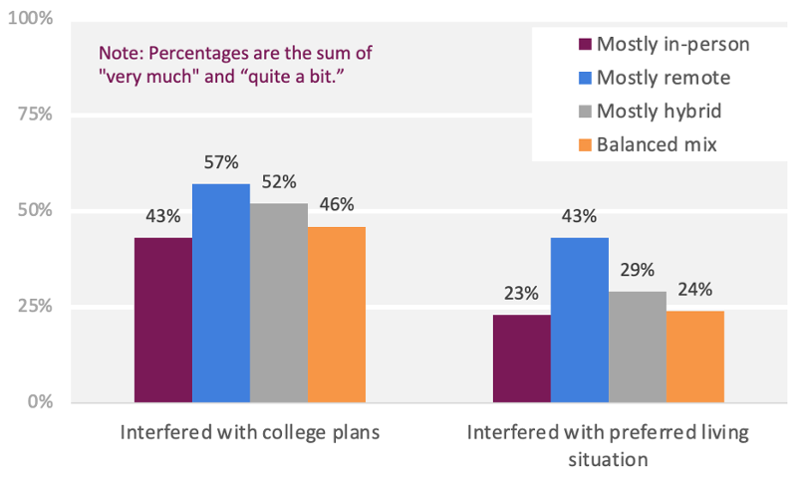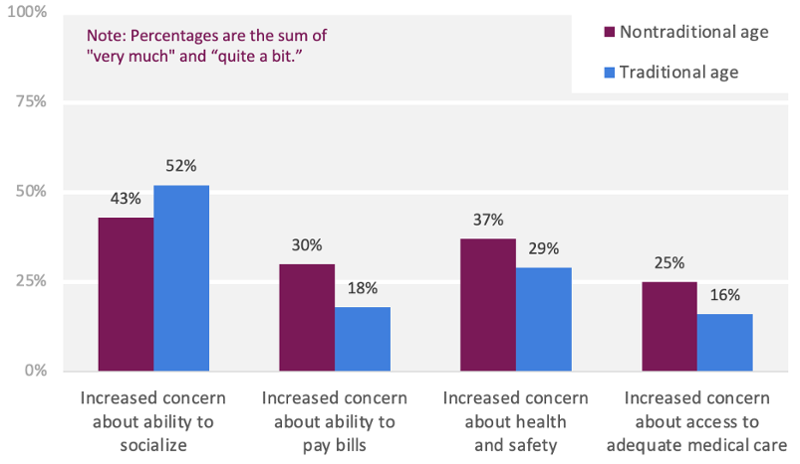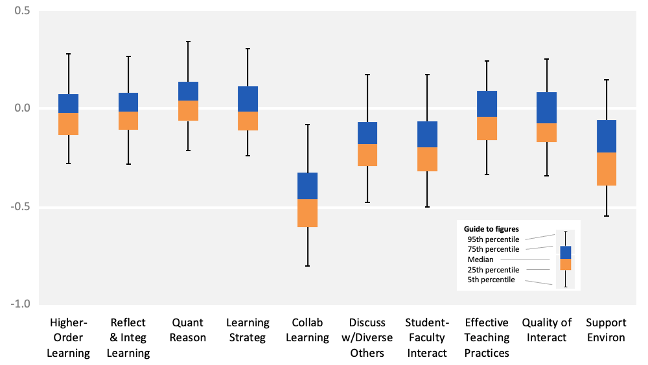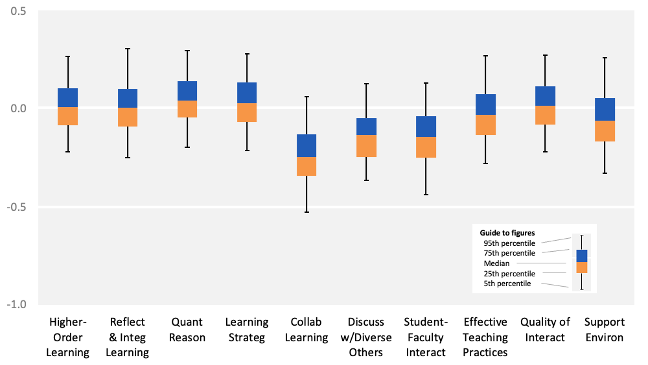Some differences were observed for nontraditional-age students (21 and older for first-years; 25 and older for seniors), compared with their traditional-age counterparts. Given the variation in course modality for these groups, this is understandable, but further investigating discrepancies can help to reveal opportunities for customized support aligned with the needs of the group. Both first-year and senior traditional-age students were more likely to feel that the pandemic interfered with their college plans, ability to succeed as a student, ability to participate in special learning opportunities, and preferred living situation (Table 3). These traditional-age students were also more likely to struggle with increased mental health issues, including feeling hopeless, inability to concentrate, and difficulty sleeping, as well as increased concern (“quite a bit” or “very much”) about their ability to socialize. It may be that traditional-age students had higher or more developed expectations about the changes that college would bring (i.e., living away from home, freedoms), but given pandemic shifts in course modality and social life not all of these experiences were possible. In comparison, nontraditional-age students may have better tempered their expectations or could be more resilient and have better coping strategies than their younger counterparts. Meanwhile, first-year nontraditional-age students were more likely to feel increased concern about their ability to pay bills, health and safety, and access to adequate medical care (Figure 3). Not surprisingly, both first-year (33%) and senior (36%) nontraditional-aged students were more likely to substantially (“more” and “much more”) increase their time spent caring for dependents and others, compared to 17% (first-years) and 19% (seniors) of traditional-aged students.
Note: In the results above, all core item percentages are weighted by institution-reported sex, enrollment status, and institutional size. All module item percentages are weighted by institution-reported sex and enrollment status.
